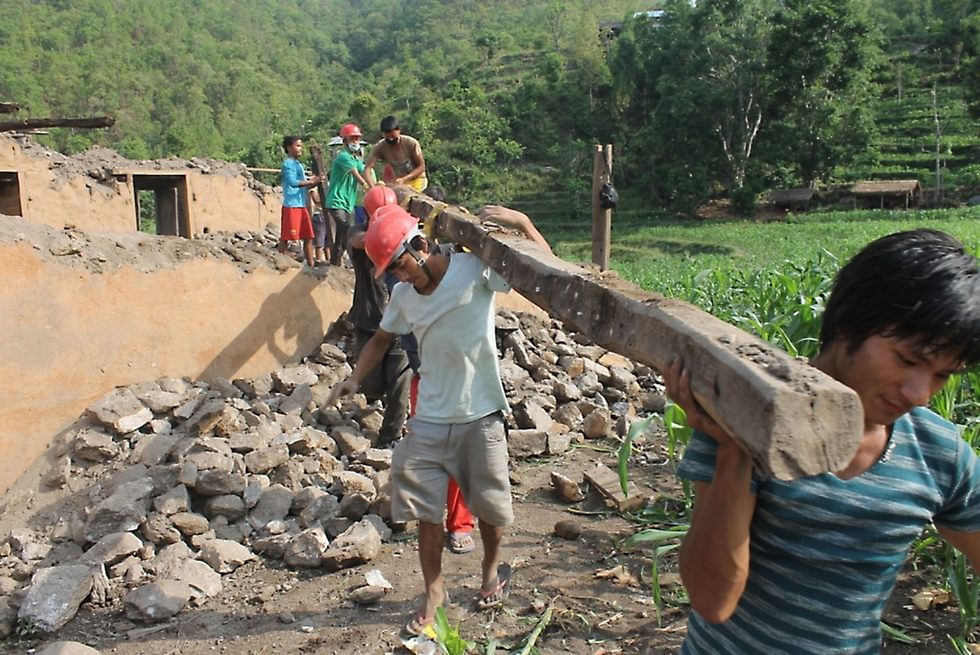Mental Health after the Earthquake: Building Nepal’s Mental Health System in Times of Emergency
From the Series: Aftershocked: Reflections on the 2015 Earthquakes in Nepal
From the Series: Aftershocked: Reflections on the 2015 Earthquakes in Nepal

In the months since the deadly earthquake, Nepal has seen an unprecedented abundance of mental health discourse and practice. From the government to local NGOs and from citizen initiatives to donor agencies, diverse actors have become involved in activities aimed at alleviating the trauma of earthquake survivors. Their work has ranged from so-called psychological first aid provided in the days following the disaster to psychosocial counseling, public radio programs, support hotlines, and counselor trainings. Every seven to ten days, the Mental Health Subcluster, part of the United Nations Cluster System set up in humanitarian emergencies, meets to coordinate psychiatric services even as the Psychosocial Support Technical Working Group gathers to coordinate activities related to psychosocial care. Despite these efforts, true coordination has proved to be difficult as new organizations continue to arrive, while others phase out.
Due to the lack of state resources to support large-scale mental health and psychosocial care, local NGOs funded by international donor organizations have filled gaps in practice, training, and advocacy over the past two decades (Upadhaya et al. 2014).1 Nepali psychosocial NGOs first appeared in the 1990s as a response to incidents of torture and trauma during the People’s Movement, followed by the Maoist conflict in which over thirteen thousand people lost their lives and hundreds of thousands were internally displaced over the course of ten years. Since 1990, these Nepali NGOs, in partnership with international academic institutions, have received funding to conduct mental health research with diverse populations, including people affected by conflict and natural disaster and Bhutanese refugees. Research has also been carried out on ways to strengthen the integration of mental health services into primary health care. Now, in the aftermath of the earthquake, these NGOs are offering some of the first responses to a new mental health crisis.
Increased funding has brought psychiatric knowledge and discourse on mental illness (maanasik samasya) into the public sphere through mass media outlets like Radio Nepal, which hosts a UNICEF-supported program known as Bhandai Sundai (literally, “telling listening”), which is dedicated to discussing callers’ symptoms of distress and offering support and advice. Reaching large swaths of the population in villages across Nepal, the radio is often the primary source of news and connection with the rest of the country. Whether listening on cellphones or solar-powered radios, people began to tune into shows about trauma, psychosocial care, and maanasik samasya. Counselors and psychiatrists discussed callers’ feelings of dar (fear) and tras (terror), offering practical advice and comfort. For many listeners, this may have been the first time they were ever exposed to the language of mental health.
Suddenly freed from stigma because of the earthquake’s ostensibly natural origin, psychosocial care and mental health have attracted the attention of policymakers and donors to an extent that surpasses even that seen during the decade-long People’s War. Existing donors have dramatically increased their levels of support, while a growing number of new donors have shown a desire to fund psychosocial support for traumatized earthquake survivors. As previous humanitarian disasters in Afghanistan and the West Bank have shown, permanent mental health infrastructure is often built up in the context of crisis and its aftermath (WHO 2013). Nepali policymakers and international donors see this moment as an opportunity to strengthen what has historically been a weak mental health system, where less than 1 percent of the government’s total health budget has been allocated to mental health and there is one practicing psychiatrist per million people (WHO and Ministry of Health and Population Nepal 2006).
Mental health initiatives after the earthquake should be critically examined in light of the opportunities and challenges they present for the mental health field in Nepal. As Didier Fassin (2013, 15), a key thinker on morality, humanitarianism, and politics has asked: “What does our relying increasingly on humanitarian reason to make policies mean for contemporary societies? And second, to what tensions, contradictions, and even aporias does humanitarian government lead?” The complicated task of translating mental health concepts into the Nepali context and the challenge of providing an equal standard of care to linguistically and culturally diverse communities across the fourteen affected districts remain unaddressed in coordination meetings. How, we might ask, should radically different epistemologies of suffering, causality, and relations with the dead be respectfully addressed in the context of trauma? How will it be ensured that counselors and community health workers are able to appropriately help the diverse communities that have been scarred by unspeakable loss?
1. While there has long been a rich and diverse practice of traditional healing in Nepal (see Craig 2012; Desjarlais 1992), it was not until the 1990s that a psychosocial approach was introduced.
Craig, Sienna R. 2012. Healing Elements: Efficacy and the Social Ecologies of Tibetan Medicine. Berkeley: University of California Press.
Desjarlais, Robert R. 1992. Body and Emotion: The Aesthetics of Illness and Healing in the Nepal Himalayas. Philadelphia: University of Pennsylvania Press.
Fassin, Didier. 2013. “The Predicament of Humanitarianism.” Qui Parle: Critical Humanities and Social Sciences 22, no. 1: 33–48.
Upadhaya, Nawaraj, Nagendra P. Luitel, Suraj Koirala, Ramesh P. Adhikari, Dristy Gurung, Pragya Shrestha, Wietse A. Tol, Brandon A. Kohrt, and Mark J. D. Jordans. 2014. “The Role of Mental Health and Psychosocial Support Nongovernmental Organisations: Reflections from Post Conflict Nepal.” Intervention: Journal of Mental Health and Psychosocial Support in Conflict-Affected Areas 12, no. 1: 113–28.
World Health Organization (WHO). 2013. “Building Back Better: Sustainable Mental Health Care after Emergencies.”
_____, and Ministry of Health and Population Nepal. 2006. “WHO–AIMS Report on Mental Health System in Nepal.”